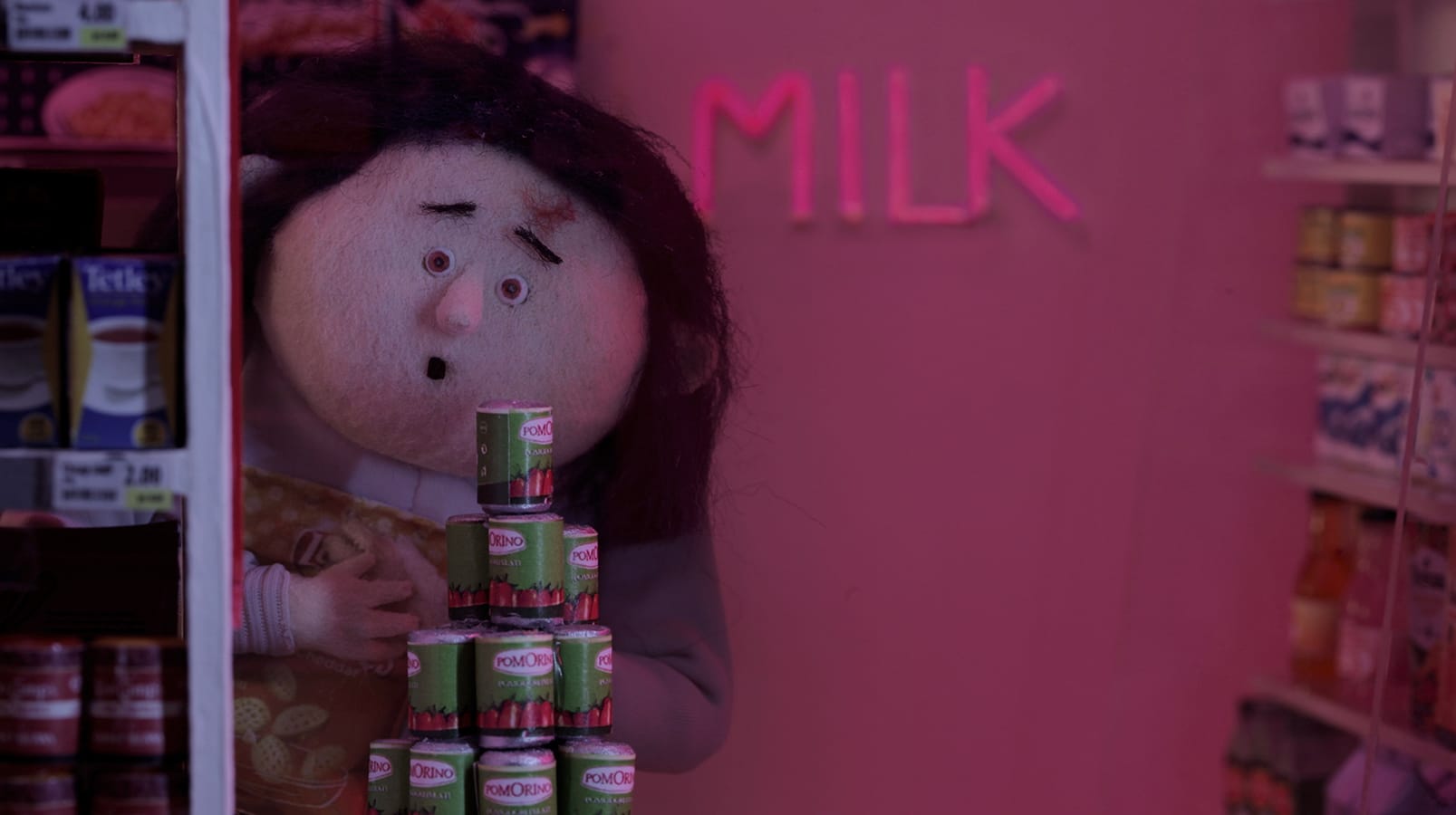RELATED ARTICLE
Consuming the Cat: Brenda Lien Calls Out an Internet Fetish
Free the Vagina: A Conversation with Renata Gasiorowska
The Criterion Collection

Melancholy
and offbeat, Anna Mantzaris’s stop-motion animated short Good
Intentions tells the tale of a woman involved in a hit-and-run
accident that sparks a chain of strange occurrences. Using chubby-cheeked felt
puppets that might suggest a more charming, whimsical type of story, Mantzaris creates
something unexpected: a dark portrait of human nature in all its complexity. This
week, we’re presenting Good Intentions
on the Criterion Channel in a pairing with another film about the moral
dilemmas surrounding a road accident, Juan Antonio Bardem’s Death of a
Cyclist. In anticipation of Mantzaris’s debut on the Channel, I spoke
with her about how she arrived at her singular aesthetic and tone, and how she
stays connected with a project during the lengthy and laborious process of
stop-motion animation.
How did you first get interested in animation?
I have always been into drawing and crafty stuff, but it took me some time to understand what you could do, or become, in this field.
I went to art school for two years, which was very fun. It made me realize that I don’t want to become a painter or illustrator, but I still wanted to work in a creative field. So I applied for a BA in animation. I barely knew what that would involve, but something drew me to it. I think I liked the combination of elements: it’s art but also storytelling—and much more.
Tell us about your technique. How did you create the puppets, and how long did the entire process take?
I work with stop-motion, which involves creating real puppets and sets, and moving them little by little and taking still pictures. Working on a few personal projects with small budgets has shaped my style—in a good way! I often work with felt and wool for my puppets; I love the softness and sympathetic nature of those materials, and they allow me to render the characters in a simple style, without feeling harsh or stiff. Most of the time I make the core of the puppets in aluminum wire and balsa wood, and I make the eyes out of small beads.
The project is often divided into four parts: preproduction, construction, animation, and postproduction. For each second of the film we need twenty-four or twenty-five still images, so for a normal day you are lucky if you get five seconds. That’s 125 photos!
Unlike in live action, the edit mostly happens in preproduction. Because of the time it takes, you can’t shoot extra footage here and there and play around with it. You need to plan it in a very detailed way and know the exact length of each shot before you start. How long a project takes depends on the crew and budget, but a one-minute piece can take four to six months, from beginning to the end. A short film is normally around a year of production.
I really like working in this style. It has more or less become my core style, but I also think that it keeps evolving and changing all the time.
What was the inspiration behind this strange, sad, guilt-ridden story?
I had just made a very funny film called Enough, so I was curious to try something darker and more ambiguous, more thriller-like and surreal. I had seen a lot of good thrillers that year. And I wanted to find different ways of doing ghost stories. Do you need to be dead to be a ghost, or is it possible that you are now a ghost of who you used to be? I also liked the idea of things ending up bad even when the main character has good intentions. And exploring the ways in which the feeling of guilt can consume you.
The story was originally longer and more complex. My boyfriend and I wrote it together, and the time was limited, so we ended up cutting out quite a lot, and the things that had to go were the funnier parts. So it actually ended up being darker than I had intended!
I really enjoy searching for what is human. And for me, that always involves imperfection and a mix of emotions. We never feel only one feeling at a time. Humor is better if there is some small element of melancholy, and melancholy is better if there is a small element of humor in it, even if it’s very, very subtle.


